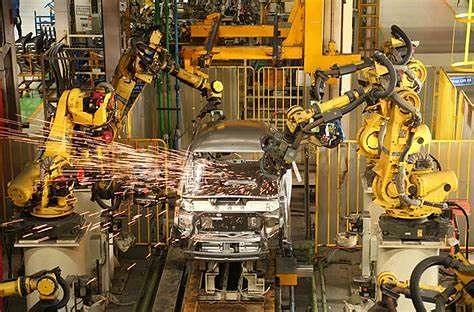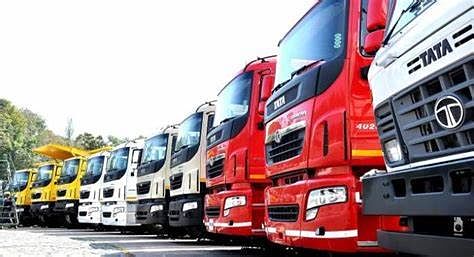Tata Motors’ 300,000-strong order book to see demand momentum continuing
Bookings of 204,000 units at Jaguar Land Rover and 100,000 under its passenger vehicle business translates to an order book of Rs 90,000 crore or $11 billion.
Tata Motors, India's largest automobile company by revenues, is sitting on a record order book of 300,000 vehicles for both Jaguar Land Rover and Tata Motors passenger vehicle (PV) business combined at the end of the September-ending third quarter. This translates into robust Rs 90,000 crore of revenues or $11 billion.
With semiconductor supplies improving and its order book holding steady, Tata Motors is well set to notch record sales in its PV business even as its marquee brand Jaguar Land Rover takes the road to sustained recovery with improved supplies. The PV business, which is firing on all cylinders, delivered its highest ever quarterly revenues at Rs 12,500 crore in the July-to-September 2022 quarter, selling over 142,000 vehicles.
Following the Q2 earnings call today, P B Balaji, Group CFO at Tata Motors told media persons that the order book is very strong for Jaguar Land Rover at 204,000 units and there is a continued increase in demand for its top three models – the Land Rover Defender, Range Rover and Range Rover Sport.
“While the global markets are volatile, we are still witnessing a pickup in orderbook and we see no major concern. For Tata Motors’ PV business, the order book is 100,000 units. We will continue to deliver market-beating growth. The outlook remains positive, with supplies improving, we aim to deliver positive free cash flow for FY2023," added a confident Balaji.
Riding on the strong performance in Q2, Tata Motors increased its market share by 200 basis points in the PV segment to 14.1% at the end of September 2022.
It was a record quarter for the electric vehicle business too, with 11,500 vehicles being delivered.
Improved visibility of semiconductor supplies
“There is an improved visibility on semiconductor supplies. The number of issues at JLR have come down and India does not have any major issues on ramp up on account of supplies. The focus is on creating demand,” said Balaji.
On its part, JLR has directly engaged with chip suppliers by entering into partnership agreements to improve the visibility of supply in the near-term and support its future product programs.
Tata Motors’ PV business, as targeted is set to end FY2023 with over half-a-million units in sales, whereas JLR is likely to close the fiscal with the volumes of 301,000 units.

Revving up investment and expanding capacity
Meanwhile, Tata Motors is on course to invest 2.5 billion pounds (Rs 23,500 crore) for JLR during the current fiscal and another Rs 6,000 crore for its standalone business – which includes both PVs and commercial vehicles.
In order to cater to higher demand, Tata Motors has finished debottlenecking its existing car plant capacities to produce about 650,000 units or 55,000 units a month.
Once the Ford India plant in Sanand goes on stream in FY2024, Tata Motors will be able to generate an additional 25,000 units of capacity per month or 300,000 units per annum – taking up its cumulative manufacturing capacity to over 850,000 units per annum.
Given that there is usually a slowing down in bookings after the festive season for industry and discounts offered on select models, the Group CFO is not very concerned. According to Balaji, this is a regular phenomenon and despite discounts, there is no significant erosion on margins. “While there are some headwinds in the marketplace, we don’t see any major concern on the demand front,” avvered Balaji.
What’s more, with the softening of commodity prices and increased operational leverage, the company expects to see an improvement in bottom-line, going forward.

Sharpening the retail focus on CVs
In its commercial vehicle business, Tata Motors has decided to share Vahan retail numbers and market share. This move underlines the shift from being pulled into dispatch-led discount market share to real-world, value-driven retail sales market share.
As per the company management, Tata Motors had a market share of 43% in Q2 FY2023. Balaji said the variable marketing expenditure or VME has already come down in the past couple of quarters, indicating that the company is not interested in participating in the discount war to buy market share and will continue to make efforts to pull it down further and focus on value selling.
Strong performance helps prune consolidated losses
Tata Motors’ strong performance meant that in the September-ending second quarter it has cut its consolidated loss substantially to Rs 944.61 crore, compared to the Rs 4,441.57 crore net loss in Q2 FY2022.
Strong growth in volumes in standalone entities for both its passenger vehicle and commercial vehicle businesses helped the auto major to post 29.7% YoY growth in Q2 FY2023 to Rs 79,611 crore.
RELATED ARTICLES
Continental exits TBR market in India, shifts focus to car and SUV radials
German tyre manufacturer aims to tap the double-digit market growth opportunity for big SUV and luxury car tyres which w...
New ZF SELECT e-drive platform gives EV makers a choice in 100 to 300 kW range
Modular e-drive platform optimally matches 800-volt overall system and components such as the electric motor and power e...
Daimler India CV and BharatBenz deliver 200,000th truck
Daimler India Commercial Vehicles' portfolio includes truck models ranging from 10 to 55 tonnes for a wide variety of ap...





 09 Nov 2022
09 Nov 2022
 13745 Views
13745 Views





 Autocar Professional Bureau
Autocar Professional Bureau




